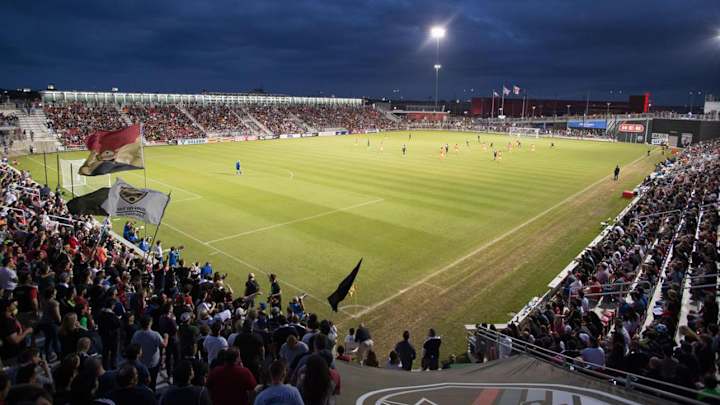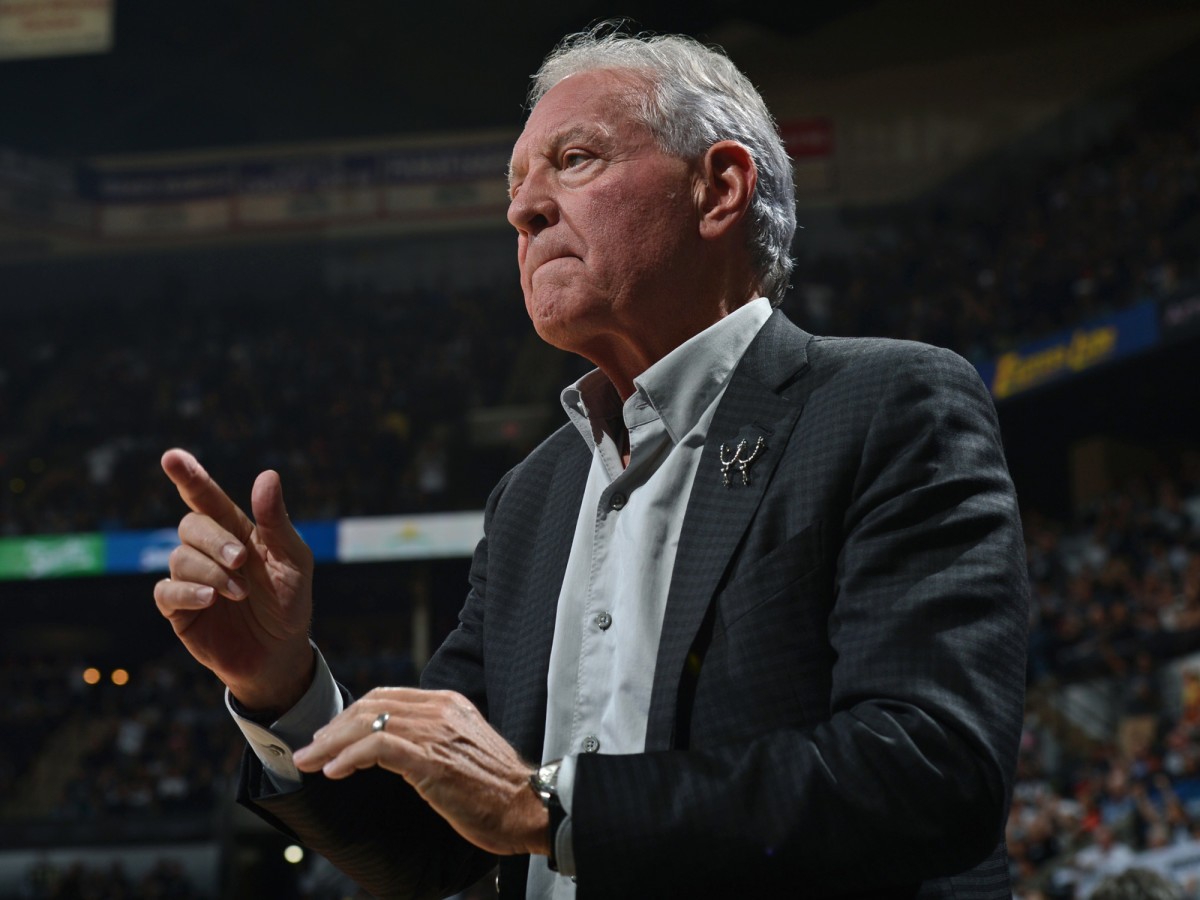MLS expansion city profile: San Antonio

Market Analysis
They’re certainly proud of all the titles in San Antonio. There’s only one major league sports team in town, but it’s dominant in more ways than one and the haul is impressive. It’s there to see in the rafters at AT&T Center: five NBA championships (the fourth-most in the league), a half-dozen conference crowns and the retired numbers of legends like George Gervin, David Robinson and Tim Duncan.
Tim Holt is new to the area. He moved there last year after leaving Orlando City to become managing director at San Antonio FC, the city’s new USL team. Although Holt wasn’t around when the Spurs hung those banners, he’s become well acquainted with how they were earned. The NBA juggernaut and SAFC have the same owner–Spurs Sports & Entertainment. Ask Holt about his new bosses, and he’s quick to mention additional honors that don’t come with a trophy but do say quite a lot about the company.
“There’s a value system that’s important here day-in and day-out,” he said. “Every decision that’s made, every interaction with the community, is sort of shaped around this system of integrity, success and caring—performance, but performance the right way.”
For evidence, Holt said, look at ESPN’s “Ultimate Standings.” Each year, ESPN and independent survey and research companies examine every team in the NBA, NFL, NHL and MLB and rank them according to more than just wins, losses, coaching and talent. Fan relations, affordability, arena experience and ownership conduct also matter. And on four occasions since the Standings launched in 2003, the Spurs have been No. 1 overall. It’s also the only franchise to reach the top 10 every year.
That matters, Holt said, because it’s an indication of how SS&E will run an MLS team. The company’s track record and reputation will anchor San Antonio’s expansion application.
“It’s cultural,” he told SI.com. “You want to talk about a strength and an asset, the ownership group here is going to be at or tied at the top of the list.”
CCL format changes fix some issues, but ignore major ones, create new problems
SS&E is a huge part of what makes San Antonio stand out. On its own, the market is on the fringe of the 28-team league MLS currently envisions. It’s the 25th most-populous metro area in the U.S. but ranks only 31st as a media market. There were five Fortune 500 companies headquartered there as of 2015, but that number is nearly doubled by Dallas and dwarfed by Houston.
Dig deeper, however, and MLS might find some intriguing statistics. Holt said the increasing connectivity between San Antonio and Austin, which is about 80 miles to the north, can make the region feel like one, integrated, massive metro area.
“I go to a ton of Spurs games, and invariably I’m sitting next to someone who lives in Austin,” he said.
Combined, San Antonio and Austin have a population of some 4.4 million. Both are growing, and that should appeal at MLS HQ. According to Forbes, as of 2013 San Antonio was enjoying the largest increase (9.2% over three years) of new residents in their 20s in the country. Meanwhile, San Antonio is the seventh-largest Hispanic media market in the country. Austin ranks 22nd. Millenials and Latinos arguably are MLS’s two most important target markets.

Ownership Group
SS&E is a consortium of investors led by chairman and CEO Julianna Holt and her husband, Peter Holt (no relation to Tim). The Holt family owns Holt Cat, which is the country’s largest Caterpillar dealership. It exceeded $1.6 billion in revenue in 2014. The Holts took over the Spurs in 1993 and now hold a controlling interest in SS&E, which also includes Aramark, AT&T, Clear Channel Communications, Valero Energy and others among its investors.
SS&E operates the county-owned AT&T Center and in addition to the Spurs and SAFC, it owns the AHL’s Rampage (the affiliate of the Colorado Avalanche), the WNBA’s Stars and the NBA D-League’s Austin Spurs. They all wear the black and silver colors adopted by the Spurs in 1973.
Stadium Plan
SS&E and SAFC intend to turn what could have been a liability into a selling point.
As it stands, Toyota Field is among the finest lower-tier soccer stadiums in the country. The publicly owned facility opened in 2013 and seats around 8,000. It’s located some 12 miles northeast of downtown San Antonio and just off the highway that leads up to Austin.
Despite MLS’s typical preference for “urban core” venues, there are markets like Kansas City and Philadelphia that have made a suburban location work. And Holt said the easy access to Toyota Field from downtown, the I-35 and I-410 highways and the rest of the San Antonio-Austin corridor—not to mention the adjacent 12-field STAR Soccer Complex and nascent tailgate culture—combine to create an “optimal” stadium site. While MLS may not see that as ideal, it certainly doesn’t regard the location as a negative.
Instead, it’ll come down to the renovations and upgrades planned for the stadium.
The city of San Antonio and Bexar County put $18 million toward the purchase of Toyota Field in November 2015, while SS&E chipped in $3 million and signed a 20-year lease. The stadium’s original tenant, owner Gordon Hartman and the NASL’s Scorpions, proposed in 2014 a $38-$45 million expansion that included the addition of 10,000 seats, 18 more suites, a roof and more.
It’s unknown whether SS&E’s stadium plans, which must be submitted with its expansion application due Jan. 31, mirror Hartman’s. Holt said he couldn’t comment on the specifics or financing.
Soccer and Sports Scene
While the Spurs cast a long shadow, the shared ownership, complementary timing of the NBA and MLS seasons and relative lack of major league competition leave SAFC—or whatever the potential MLS team might be called—with room to grow.
San Antonio doesn’t have a ton of soccer history to fall back on, but it’s proven to be a supportive market in recent years. The Thunder, which featured England’s World Cup-winning captain Bobby Moore, lasted just two seasons in the original NASL. And the USL’s Pumas didn’t make much of a dent in the mid 1990s. But Hartman found a good formula in 2012, when more than 9,000 fans per game watched the Scorpions’ inaugural NASL campaign. Crowds would settle in just below 7,000 for the next three seasons, and in 2014 the Scorpions won the league title with a 2-1 victory over the visiting Ft. Lauderdale Strikers.
Hartman, a notable philanthropist who established a nearby amusement park catering to disabled guests, eventually decided to fold the club and sell the stadium in order to funnel the proceeds into the park (as he did with any profit earned from the Scorpions). The city, county and SS&E stepped in 13 months ago, acquired Toyota Field and established SAFC. Featuring the iconic spur made famous on the NBA hardwood in its crest and coached by former Orlando City academy director Darren Powell, SAFC finished fourth in attendance (6,170) but three points out of the playoffs at 10-12-8 in its first USL season.
SAFC also has launched a fully-funded academy, starting with boys born in 2004. They’ll lead the way as additional, younger age groups are added in 2017-18.
Absent an ideal venue, San Antonio hasn’t hosted many high-profile matches. The Alamodome, whose primary occupier is the UTSA football team, is almost 25 years old. Mexico and South Korea drew more than 54,000 fans to a 2014 friendly, and then El Tri and the USA hit 65,000 a year later. The USA’s only other visit came back in 1988, when it defeated Costa Rica at a high school football stadium just down the road from Toyota Field.
Jordan Morris turns Alamodome into field of dreams for USA vs. Mexico
MLS Pros
MLS likes owners and investors with ties to other pro sports, and SS&E obviously fits that bill. Considering the company’s reputation and resources, it would be a significant addition to the MLS board room. Tim Holt also is a respected executive who spent 16 years as president of the USL before leaving for Orlando. He’s someone with whom MLS will have no problem working.
Public and political support of SAFC and SS&E help as well. Not only did the city and county kick in for Toyota Field, AT&T Center was financed largely by county bonds and hotel/car rental tax increases. That sort of commitment, especially if it extends to soccer stadium renovations, will impress at MLS.
Last but not least, the market’s diversity, youth, growth and consistent support for the Scorpions and SAFC also are significant plusses.
MLS Cons
Simply put, the competition is tough. While San Antonio has an attractive combination of attributes, it’s up against bigger markets and glitzier stadium plans (or promises). Like other expansion hopefuls outside the top 20-25 DMAs, it’ll have to wow the league.
While MLS doesn’t see Toyota Field’s location as a detriment, it's tough to imagine it having the same impact as proposals in Detroit, Tampa Bay, St. Louis or Sacramento. And among the list of 10 identified applicants, San Antonio’s metro population ranks sixth.
It will be important for SS&E and SAFC to demonstrate that Austin can be counted on. Holt said there was no indication that MLS was concerned about adding a third Texas team. But with San Antonio sitting 275 miles from Dallas and around 200 from Houston, the league may decide that the area doesn’t represent a hole on its national map. Or conversely, MLS might be attracted to a Texas Triangle series that may become the state's answer to the Cascadia Cup in the Pacific Northwest.
There’s not much doubt that SS&E can run a successful team or that fans will support it. The question is whether MLS feels it needs to be in San Antonio.
Commissioner's Thoughts
“I think it starts with the recent engagement of the Spurs, their entertainment holding company and their expressed interest on bringing MLS to San Antonio,” MLS commissioner Don Garber said last month. “I have had a good relationship and spent a great deal of time with Gordon Hartman, and have really a great deal of respect for what he's done to both the community and to bring the team to—bring [the Scorpions] to the city. But more needs to happen. I think the Spurs are focused on trying to do that. We know that the city and county officials have worked on getting together on Toyota Field. We are spending time with them and met with them a number of times and continue to be intrigued as we are by the activity and potential in Austin.”
